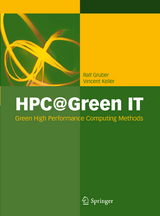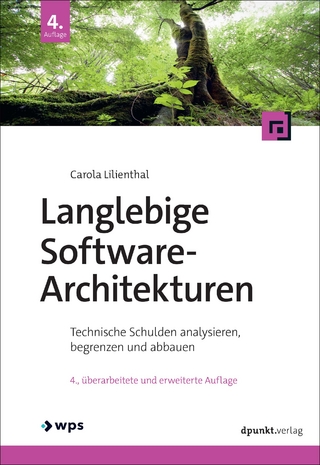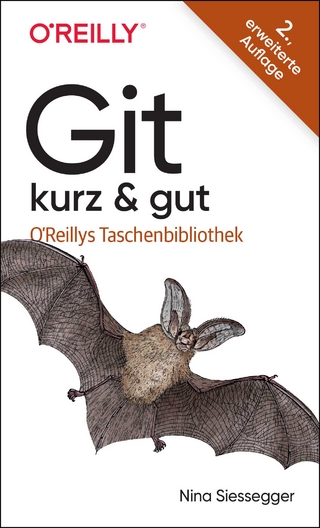HPC@Green IT
Springer Berlin (Verlag)
978-3-642-01788-9 (ISBN)
Making the most ef?cient use of computer systems has rapidly become a leading topic of interest for the computer industry and its customers alike. However, the focus of these discussions is often on single, isolated, and speci?c architectural and technological improvements for power reduction and conservation, while ignoring the fact that power ef?ciency as a ratio of performance to power consumption is equally in?uenced by performance improvements and architectural power red- tion. Furthermore, ef?ciency can be in?uenced on all levels of today's system hi- archies from single cores all the way to distributed Grid environments. To improve execution and power ef?ciency requires progress in such diverse ?elds as program optimization, optimization of program scheduling, and power reduction of idling system components for all levels of the system hierarchy. Improving computer system ef?ciency requires improving system performance and reducing system power consumption. To research and reach reasonable conc- sions about system performance we need to not only understand the architectures of our computer systems and the available array of code transformations for p- formance optimizations, but we also need to be able to express this understanding in performance models good enough to guide decisions about code optimizations for speci?c systems. This understanding is necessary on all levels of the system hierarchy from single cores to nodes to full high performance computing (HPC) systems, and eventually to Grid environments with multiple systems and resources.
Ralf Gruber won the Cray Gigaflop Performance Award in 1989 with world's fastest parallel program running at 1.7 GFlop/s sustained. He was responsible for the Swiss-Tx cluster project, a co-operation between EPFL, Compaq, and Supercomputing Systems. Since 6 years he teaches the doctoral school course on "High Performance Computing Methods". Vincent Keller received his Master degree in Computer Science from the University of Geneva (Switzerland) in 2004, and his PhD degree in 2008 from the Swiss Federal Institute of Technology (EPFL) in the HPCN and HPC Grids fields. Since 2009, Dr. Vincent Keller holds a full-time researcher position at University of Bonn in Germany. His research interests are in HPC applications analysis, Grid and cluster computing and energy efficiency of large computing ecosystems.
Historical highlights.- Parameterization.- Models.- Core optimization.- Node optimization.- Cluster optimization.- Grid-level Brokering to save energy.- Recommendations.
From the reviews:
"The current book "HPC@Green IT" by Ralf Gruber and Vincent Keller is unique in addressing all of these topics in a coherent and systematic way and in doing so fills an important gap. The methods presented and their integration have the potential to influence power efficiency and consumption on various scales of the system architectures and should ultimately help the 'greening' of HPC computing. "
Dr. Erich Strohmaier, Lawrence Berkeley Laboratory, August 2009
"The book familiarizes readers with this topic and provides a collection of techniques for green high-performance computing (HPC). ... In summary, this well-written book includes a lot of colorful graphs/charts, tables, and benchmark results. ... Whereas the authors mainly discuss techniques like frequency scaling (to reduce power usage) and compiler optimization (to reduce execution time), there are other techniques that can improve a system's efficiency--for example, dynamic powering on/off servers." (Michele Mazzucco, ACM Computing Reviews, August, 2010)
From the reviews:"The current book "HPC@Green IT" by Ralf Gruber and Vincent Keller is unique in addressing all of these topics in a coherent and systematic way and in doing so fills an important gap. The methods presented and their integration have the potential to influence power efficiency and consumption on various scales of the system architectures and should ultimately help the ‘greening’ of HPC computing. "Dr. Erich Strohmaier, Lawrence Berkeley Laboratory, August 2009“The book familiarizes readers with this topic and provides a collection of techniques for green high-performance computing (HPC). … In summary, this well-written book includes a lot of colorful graphs/charts, tables, and benchmark results. … Whereas the authors mainly discuss techniques like frequency scaling (to reduce power usage) and compiler optimization (to reduce execution time), there are other techniques that can improve a system’s efficiency--for example, dynamic powering on/off servers.” (Michele Mazzucco, ACM Computing Reviews, August, 2010)
| Erscheint lt. Verlag | 24.3.2010 |
|---|---|
| Vorwort | Erich Strohmaier |
| Zusatzinfo | XV, 221 p. |
| Verlagsort | Berlin |
| Sprache | englisch |
| Maße | 155 x 235 mm |
| Gewicht | 570 g |
| Themenwelt | Mathematik / Informatik ► Informatik ► Software Entwicklung |
| Schlagworte | Adapt Computers to Applications • algorithm • algorithms • Application Efficiency • Cluster • Computer • Green Computing • Green IT • grid computing • High Performance Computing • High Performance Pomputing • High Productivity Computing • Informationstechnologie • Optimization • Processor • SUP • Supercomputing • Supercomputing / HPC (High-Performance-Computing) |
| ISBN-10 | 3-642-01788-6 / 3642017886 |
| ISBN-13 | 978-3-642-01788-9 / 9783642017889 |
| Zustand | Neuware |
| Haben Sie eine Frage zum Produkt? |
aus dem Bereich




